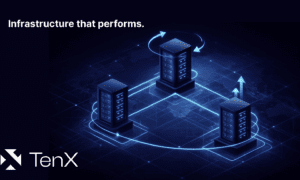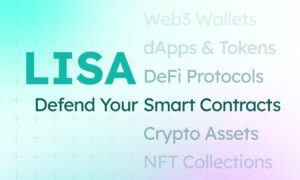The real estate world in Thailand is changing fast, and technology is leading the way. It’s not just about online listings anymore. Agencies are finding new ways to work, using smart tools to get ahead. This shift is creating a whole new scene for property businesses, especially with the rise of the proptech real estate agency platform Thailand.
Key Takeaways
- Technology like AI and digital tools is making Thai real estate agencies more competitive.
- AI can automate tasks and provide insights for better business decisions.
- New proptech platforms are changing how real estate agencies operate in Thailand.
- Focusing on customers and building efficient systems helps proptech companies grow.
- Sustainability is becoming a bigger part of real estate, with technology playing a key role.
Embracing Digital Transformation in Thai Real Estate
The real estate scene in Thailand is really starting to shift. For a long time, things moved pretty slowly, but now, technology is shaking things up, especially for property agencies. It’s not just about having a website anymore; it’s about using digital tools to work smarter and get ahead of the competition.
The Evolving Landscape of Property Agencies
Think about how agencies used to operate. It was all about phone calls, faxes, and in-person meetings. Now, clients expect instant information and a smooth process. Agencies that don’t adapt are going to get left behind. We’re seeing a move towards more streamlined operations, where digital platforms handle a lot of the legwork. This means agents can focus more on what they do best: building relationships and closing deals.
Leveraging Technology for Competitive Advantage
Using the right tech is no longer optional; it’s how you stand out. Property technology, or PropTech, is offering new ways to manage listings, connect with buyers and sellers, and even analyze market trends. Agencies that embrace these tools gain a significant edge. It’s about making processes faster, more efficient, and more transparent for everyone involved.
Proptech Real Estate Agency Platform Thailand: A New Era
Thailand is seeing a rise in PropTech solutions specifically designed for local needs. These platforms can help agencies manage their entire workflow, from initial contact to final sale. They offer features like:
- Automated lead generation and follow-up
- Virtual property tours and digital staging
- Data analytics for market insights
- Integrated CRM systems for client management
This digital shift means agencies can serve more clients better, making the whole experience more positive for buyers and sellers alike. It’s a big change, but one that promises a more dynamic and effective real estate market for Thailand.
AI’s Impact on Real Estate Operations
It’s pretty wild how much artificial intelligence is shaking things up in the real estate world, especially for agencies here in Thailand. We’re not just talking about fancy chatbots anymore; AI is starting to change how things actually get done behind the scenes. This technology is moving from just automating simple tasks to creating entirely new ways of working.
From Workflow Automation to AI-Native Organizations
Think about all the repetitive stuff agents used to do – scheduling viewings, sending out property details, following up on leads. AI can handle a lot of that now. This frees up agents to focus on what they do best: building relationships and closing deals. But it’s more than just automation. We’re seeing a shift towards what you might call AI-native organizations. These aren’t just companies using AI tools; they’re built from the ground up with AI at their core. Their processes, their data handling, even their decision-making, are designed around AI capabilities.
Reshaping Proptech with Multi-Agent AI Models
What’s really interesting is how AI is evolving beyond single-task bots. We’re starting to see multi-agent AI models. Imagine a team of AI agents, each with a specific role, working together to solve a complex problem, like finding the perfect investment property for a client or optimizing a marketing campaign. This collaborative AI approach can process vast amounts of data and identify patterns that humans might miss, leading to more informed and efficient operations.
AI-Powered Insights for Strategic Decision-Making
Beyond the day-to-day, AI is becoming a powerful tool for strategy. Instead of just guessing what might work, agencies can now get data-driven insights. This means understanding market trends more accurately, predicting property values with greater confidence, and even identifying potential risks before they become problems. It’s about making smarter choices, faster.
Here’s a quick look at how AI is changing operations:
- Lead Qualification: AI can analyze incoming leads, scoring them based on likelihood to convert, so agents prioritize the hottest prospects.
- Market Analysis: AI tools can sift through massive datasets to identify emerging neighborhoods, price trends, and buyer preferences.
- Property Matching: Sophisticated algorithms can match buyer needs with available properties more precisely than ever before.
- Automated Reporting: Generating regular reports on market activity, client engagement, and sales performance can be done automatically.
The real estate industry has always relied on human connection, but AI is proving to be a powerful partner, not a replacement. It’s about augmenting human capabilities, making processes smoother, and providing insights that were previously out of reach. Agencies that embrace this will likely find themselves ahead of the curve.
It’s a big change, and honestly, it’s still early days for many. But the impact is undeniable. Agencies that start integrating these AI tools now are setting themselves up for a much stronger future in this fast-paced market.
Scaling Proptech Ventures in Thailand
So, you’ve got a great idea for a proptech company in Thailand, and it’s starting to gain some traction. That’s fantastic! But turning that initial spark into a sustainable business, one that actually grows and makes money, is a whole different ballgame. It’s not just about having a cool app or a slick platform; it’s about building something that can handle more users, more data, and more complexity without falling apart.
Lessons from High-Growth Proptech Startups
Looking at other companies that have managed to scale is a smart move. What did they do right? Often, it comes down to a few key things. For instance, some proptech startups in Thailand have found success by focusing intensely on solving a very specific problem for a particular group of users. Instead of trying to be everything to everyone, they zeroed in on a niche and did it exceptionally well. This often means building a product that users genuinely love and can’t imagine living without. It’s about creating something so useful that word-of-mouth marketing starts to take over. Think about how KMM Services has managed properties since 2011, focusing on maximizing client investments through excellent service and property upkeep. That kind of focused approach builds trust and repeat business.
Building a Customer-Obsessed Culture
This is a big one. If your customers aren’t happy, your company isn’t going anywhere, no matter how fancy your tech is. For proptech, this means making sure the user experience is smooth, intuitive, and actually helpful. Are you listening to feedback? Are you making changes based on what your users are telling you? Building a culture where everyone, from the developers to the sales team, thinks about the customer first is vital. It’s about understanding their pain points and constantly looking for ways to make their lives easier. This isn’t just about customer service; it’s about embedding that mindset into every decision you make.
When you’re scaling, it’s easy to get caught up in the technology and the growth numbers. But if you lose sight of the people who are actually using your product, you’re on a slippery slope. A truly scalable business is one that keeps its customers at the heart of everything it does, adapting and evolving based on their needs and feedback.
Achieving Significant Recurring Revenue
This is the holy grail for many startups. How do you get customers to pay you regularly, month after month, year after year? For proptech, this often means moving away from one-off sales towards subscription models or service-based revenue. Think about software-as-a-service (SaaS) for property management, or ongoing data analytics subscriptions for real estate investors. It requires a product that provides continuous value, so customers see the benefit of staying subscribed. It’s not just about getting the initial sale; it’s about retaining customers by consistently delivering value. This predictable income stream is what allows companies to plan for the future, invest in new features, and continue their growth trajectory. For example, the Makro PRO platform, which was developed with go-to-market consulting, now processes over 10,000 orders daily, showing the power of a well-executed online marketplace strategy.
The Future of AI in Traditional Industries
It feels like AI is everywhere these days, right? But what does it actually mean for industries that have been around forever, like real estate? We’re talking about a big shift, not just a small tweak. Generative AI, for instance, is being called the most disruptive technology in decades. It’s got huge potential, but also some real risks if companies just ignore it.
Navigating the Exponential Age with AI
Think about how fast things are changing. It’s like we’re in a whole new era, an exponential age. Companies that are already using AI are finding new ways to work. For example, a recent survey showed that almost everyone in leadership roles is using AI chatbots regularly, and most are happy with the results. But here’s the kicker: a huge number of them don’t trust these tools for important decisions. That gap between using it daily and not fully trusting it is telling.
Here’s what leaders are seeing:
- High-Frequency, Low-Stakes Use: Most leaders use AI multiple times a day for things like research or drafting text. It’s become as common as checking email.
- Accuracy is Still a Question: Only a little over three-quarters of leaders trust AI outputs, and that’s with human review.
- Need for Practical Tools: Leaders want AI that focuses on specific tasks, works predictably, and fits into their current systems, not something that acts like a quirky digital assistant.
Addressing the Skills Crisis with Technology
There’s a big problem out there: a skills shortage. Companies are struggling to find people with the right abilities. AI can help bridge this gap. Imagine AI tools that can train employees faster or even take over some of the more repetitive tasks, freeing up people to focus on more complex work. This isn’t about replacing people, but about making them more effective.
The real challenge isn’t just adopting AI; it’s about how we integrate it thoughtfully. We need to figure out how AI can support our teams, improve our processes, and ultimately, help us make better decisions without losing the human touch that’s so important in business.
What Leaders Should Do Now
So, what’s the game plan for leaders in these traditional industries? It’s time to get practical.
- Audit Your Current AI Use: Find out how your teams are actually using AI tools already, even if it’s not officially sanctioned. This is often called ‘shadow IT’.
- Set Up Checkpoints: For any work that’s critical for making decisions, create clear steps to check and validate the AI’s output.
- Choose the Right Tools: Don’t just grab the latest AI gadget. Pick tools that are designed for specific jobs and that your teams will actually use and trust.
Companies that figure this out will be the ones that thrive. Ignoring AI isn’t an option anymore; it’s about figuring out how to make it work for you.
Sustainability and Real Estate’s Digital Shift
The real estate world is waking up to the fact that just building things isn’t enough anymore. We’ve got to think about the planet and people, too. This isn’t just about following rules; it’s about making smarter investments that last and actually add value. PropTech is stepping in here, offering tools that help us see the bigger picture.
Integrating ESG into Investment Workflows
Environmental, Social, and Governance (ESG) factors are no longer just buzzwords. They’re becoming a core part of how smart money flows in real estate. Think about it: investors want to know their money isn’t contributing to problems, and frankly, buildings that ignore these issues are becoming riskier. New regulations are pushing this, but the real win comes when we see ESG as a way to make properties better and more profitable.
- Regulatory Compliance: Keeping up with rules like SFDR and CSRD is a must.
- Risk Management: Identifying and reducing environmental and social hazards.
- Value Creation: Finding opportunities to improve properties and communities.
- Stakeholder Trust: Building confidence with tenants, investors, and the public.
We need to move past just checking boxes. Sustainability needs to be woven into the fabric of every investment decision, from the very beginning. It’s about building for the long haul, not just the next quarter.
The Role of Digital Twins and AI in Sustainable Assets
This is where technology really shines. Digital twins, which are basically virtual replicas of physical assets, allow us to simulate different scenarios. We can test energy efficiency upgrades or see how a building might handle extreme weather before we spend a dime in the real world. AI takes this further, analyzing vast amounts of data to find patterns and suggest improvements we might miss. It’s about making buildings work smarter, use less energy, and be more comfortable for occupants.
| Technology | Benefit | |
| Digital Twins | Simulation, scenario planning, performance tracking | |
| AI-driven Analytics | Energy optimization, predictive maintenance | |
| IoT Sensors | Real-time data on usage and environment |
Biodiversity and Nature-Positive Investment Strategies
It’s not just about carbon emissions anymore. We’re starting to understand how our developments impact local ecosystems. Biodiversity – the variety of life in a particular habitat – is becoming a key consideration. Nature-positive strategies mean actively looking for ways to improve habitats, not just avoid harming them. This could mean incorporating green roofs that support pollinators or designing developments that work with natural water systems. It’s about seeing nature not as an obstacle, but as an asset that can make properties more resilient and attractive. While it’s still early days for many investors, the conversation is shifting from ‘can we afford to do this?’ to ‘can we afford not to?’
Innovations Driving Sustainable Property Investment
It feels like sustainability in property investment is finally getting the attention it deserves. For a while there, it was mostly just talk, right? But now, we’re seeing some really cool tech actually making a difference. Think about it – we’re not just building greener buildings anymore; we’re talking about making the entire investment process smarter and more responsible.
AI-Driven Energy Optimization Platforms
This is a big one. AI is getting seriously good at figuring out how buildings use energy and finding ways to cut down waste. It’s not just about flipping a switch; these platforms can learn patterns, predict needs, and adjust systems like heating, cooling, and lighting in real-time. This means lower utility bills, obviously, but also a smaller carbon footprint. It’s about making buildings work for us and the planet, not against them.
Real-Time ESG Data for Asset Management
Gone are the days of waiting for annual reports to see how a property stacks up on environmental, social, and governance (ESG) factors. Now, we’ve got systems that can pull in data constantly. This gives investors and managers a clear, up-to-the-minute picture of a property’s performance. It helps identify risks early and spot opportunities for improvement.
Here’s a quick look at what this data might cover:
- Environmental: Energy consumption, water usage, waste generation, air quality.
- Social: Occupant well-being, community impact, affordability metrics.
- Governance: Transparency in reporting, ethical practices, stakeholder engagement.
Climate Risk Modelling and Biodiversity Mapping
This is where things get really interesting, and frankly, a bit more complex. Understanding how climate change might affect a property – think flooding, extreme heat, or storms – is becoming non-negotiable. AI tools can model these risks with increasing accuracy. On top of that, mapping biodiversity helps us understand the impact our developments have on local ecosystems and how we can create nature-positive spaces. It’s a shift from just building on land to being mindful of the entire environment.
We’re moving past just ticking boxes for compliance. The real goal now is to integrate these sustainability considerations so deeply into investment decisions that they become a natural part of how we assess value and risk. It’s about building resilience and creating assets that will last, not just for a few years, but for decades to come, while also contributing positively to the world around them.
It’s a lot to take in, but these innovations are fundamentally changing how we think about property investment. It’s not just about returns anymore; it’s about responsible growth.
The Evolving Role of Sustainability Leaders
From Technical Expert to Strategic Advisor
The days of sustainability leaders being solely focused on the technical details or compliance checklists are fading fast. Think of it like this: you used to need someone who just knew all the environmental rules. Now, that person needs to be able to sit at the big table, influencing how the whole company makes decisions. They’re not just reporting on carbon emissions; they’re figuring out how those emissions affect the company’s bottom line and its future. It’s about connecting the dots between what’s good for the planet and what’s good for business. This shift means sustainability pros need to be sharp communicators, able to explain complex environmental and social issues in ways that resonate with investors, executives, and the public. They are becoming the strategic compass for the entire organization.
Shaping Investment Strategy with Sustainability
Sustainability leaders are increasingly expected to guide where money goes. This isn’t just about avoiding bad investments; it’s about finding opportunities that offer long-term value while also being responsible. They look at things like climate change risks – not just the immediate weather events, but how changing climate patterns might affect property values over decades. They also consider social factors, like how a development impacts the local community. This means they need to understand financial markets and investment principles just as well as they understand environmental science. It’s a big change from just managing waste or energy use. They’re now part of the core strategy, helping to build portfolios that are resilient and ready for whatever the future throws at them.
Driving Cultural Change Through Digital Transformation
Getting everyone on board with sustainability can be tough. It often means changing how people have always done things. Sustainability leaders are finding that digital tools are a huge help here. Think about using data analytics to show the real impact of energy-saving measures, or using digital platforms to track supply chain practices. These tools make the benefits of sustainability visible and measurable. They can also help train employees and embed sustainable thinking into daily operations. It’s not just about new technology; it’s about using that technology to shift the company’s mindset. This requires patience and a lot of communication, showing people how sustainability can actually make their jobs easier or more meaningful, and ultimately, how it contributes to the company’s success.
The real estate sector is facing a lot of pressure to change. Sustainability leaders are stepping up, moving from just managing environmental issues to actively shaping business strategy. They’re using data and new technologies to make sustainability a core part of how companies invest and operate, aiming for long-term value that benefits everyone involved.
Go-to-Market Strategies for Proptech Success
Getting your proptech product or service out there effectively is more than just having a great idea. It’s about having a solid plan to reach the right people and make them want what you’re selling. In Thailand’s fast-moving real estate scene, a smart go-to-market strategy can make all the difference between a product that just sits there and one that really takes off.
Designing Scalable Technology Stacks
Building a tech stack that can grow with your business is key. You don’t want to hit a wall a year from now because your systems can’t handle more users or data. Think about platforms that can handle increased traffic and complexity without breaking the bank or requiring a complete overhaul. This means choosing flexible architecture and tools that allow for easy integration and upgrades. For instance, a company like CP AXTRA built its Makro PRO platform with a scalable tech stack, allowing it to process thousands of orders daily and grow its user base.
Building High-Performing Tech Teams
Your team is the engine behind your proptech solution. Finding and keeping talented people who understand both technology and the real estate market is a challenge, but it’s worth the effort. This involves not just hiring the right people but also investing in their training and development. A strong team can adapt to market changes and drive innovation. Look for individuals who are problem-solvers and can work well together. Building this kind of team is often a big part of what go-to-market consultants help with.
Launching Successful B2B Online Marketplaces
For many proptech companies, especially those serving businesses, an online marketplace is a common goal. Making one successful means understanding your business customers deeply. What are their daily struggles? How can your platform simplify their operations? It’s not just about listing properties or services; it’s about creating a smooth, efficient experience. Think about features that automate processes, provide real-time data, and make transactions easy. The Makro PRO platform, for example, succeeded by making it simple for restaurants and cafes to order supplies directly from multiple vendors.
A well-thought-out go-to-market plan needs to clearly answer where you’ll compete, what you’ll offer, and how you’ll connect with customers. If any of these are fuzzy, it’s time to rethink the strategy.
Here are some points to consider when planning your launch:
- Know Your Customer: Really dig into who you’re trying to reach. What are their biggest problems that your proptech can solve? Understanding their needs is the first step.
- Choose the Right Channels: Where do your potential customers spend their time online and offline? Focus your efforts on the channels that will give you the best return.
- Measure and Adapt: Track your results closely. What’s working? What’s not? Be ready to adjust your strategy based on the data you collect. The market changes, and your plan should too.
- Build for Growth: From the start, think about how your technology and team can scale. A plan that works for 100 customers might not work for 10,000.
Adapting to New Growth Paradigms
The Shift Towards Sustained Growth
The days of chasing growth at any cost are pretty much over. It’s not about just getting bigger anymore; it’s about getting bigger in a smart, lasting way. Think of it like building a house – you want it to be large, sure, but more importantly, you want it to be solid and stand the test of time. This means focusing on the bottom line and making sure every dollar spent actually contributes to long-term success. It’s a more mature approach to business, really.
Focusing on Profitability and Efficiency
So, how do we actually do this sustained growth thing? It boils down to two main things: making more money than you spend, and doing it without wasting resources. This isn’t just about cutting costs, though that can be part of it. It’s more about optimizing everything you do. Are your marketing campaigns actually bringing in customers who stick around? Is your sales process smooth and effective, or are there bottlenecks? Every part of the business needs to be looked at through the lens of efficiency and profitability.
Here’s a quick look at what that might involve:
- Revenue Stream Analysis: Understanding where your money is really coming from and which streams are most profitable.
- Operational Streamlining: Finding ways to do things faster and cheaper without sacrificing quality.
- Customer Lifetime Value: Focusing on keeping customers happy so they buy from you again and again, rather than constantly chasing new ones.
- Resource Allocation: Making sure your time, money, and people are being used on the things that matter most for growth.
Building Robust Go-to-Market Frameworks
To make sure this sustained growth actually happens, you need a solid plan for how you’re going to reach your customers and sell to them. This is your go-to-market (GTM) framework. It’s not just about having a product; it’s about how you get that product into the hands of people who need it and how you make them want to keep buying it. A good GTM framework considers everything from who your ideal customer is to how you’ll price your product and how you’ll tell people about it.
The market is always changing, and what worked last year might not work today. You have to be ready to adjust your strategy based on new trends, customer behavior, and even new technologies. It’s about being agile and smart in how you approach the market.
Think about it like this:
- Know Your Customer: Who are you trying to sell to? What are their problems? How can your product help?
- Define Your Message: How will you tell them about your product in a way that makes sense to them?
- Choose Your Channels: Where will you reach them? Online ads? Social media? Direct sales?
- Measure and Adapt: Track what’s working and what’s not, and be ready to change your approach.
The Intersection of AI and Business Strategy
Leveraging AI for Competitive Advantage
Artificial intelligence isn’t just a tech trend anymore; it’s becoming a core part of how businesses compete. For real estate agencies, especially those in dynamic markets like Thailand, understanding how to use AI can make a big difference. Think about it – AI can help you sift through mountains of data to find the best properties for clients, or even predict market shifts before they happen. This means you can offer smarter advice and close deals faster. For instance, a Phuket real estate agent using AI tools might identify emerging investment opportunities that others miss, giving them a real edge.
Understanding AI’s Impact on Business Operations
AI is changing how day-to-day operations run. It’s not about replacing people, but about making their jobs easier and more effective. We’re seeing AI handle repetitive tasks, like scheduling viewings or initial client screening, freeing up agents to focus on building relationships and closing complex deals. This shift towards automation is key. It allows businesses to scale without just adding more headcount, which is a big deal for efficiency.
Here’s a look at how AI can streamline operations:
- Automated Lead Qualification: AI can analyze incoming leads based on predefined criteria, prioritizing those most likely to convert.
- Smart Property Matching: Algorithms can match buyer preferences with property listings more accurately and quickly than manual searches.
- Predictive Maintenance Alerts: For property management, AI can predict when maintenance might be needed, reducing costs and tenant issues.
Navigating the Perils and Promises of Generative AI
Generative AI, the kind that can create text, images, or even code, is a game-changer. It holds huge potential for things like marketing content creation or generating property descriptions. However, there are risks. Accuracy and bias are real concerns that need careful management. It’s easy to get excited about what it can do, but we need to be smart about how we use it. Relying on AI without checking its output can lead to mistakes that damage trust and business outcomes.
The key is to see generative AI as a powerful assistant, not an infallible oracle. Human oversight and critical evaluation of AI-generated content are non-negotiable steps for any business aiming for reliable results and maintaining credibility in the market.
The Road Ahead
So, what does all this mean for a luxury real estate agency? It’s clear that technology, or PropTech as we call it, isn’t just a passing trend. It’s fundamentally changing how business gets done. Agencies that embrace these new tools, from AI assistants to better online platforms, are the ones that will stick around and actually do well. It’s not about replacing people, but about making them better at their jobs, freeing them up to focus on what humans do best – building relationships and understanding client needs. The future is here, and it’s digital. Those who adapt will lead the pack. in Thailand? It’s clear that technology, or PropTech as we call it, isn’t just a passing trend. It’s fundamentally changing how business gets done. Agencies that embrace these new tools, from AI assistants to better online platforms, are the ones that will stick around and actually do well. It’s not about replacing people, but about making them better at their jobs, freeing them up to focus on what humans do best – building relationships and understanding client needs. The future is here, and it’s digital. Those who adapt will lead the pack.
Frequently Asked Questions
What is PropTech and why is it important for real estate agencies in Thailand?
PropTech is short for Property Technology. It means using new tech, like apps and software, to make buying, selling, and managing property easier and better. In Thailand, it’s changing how real estate agencies work by helping them be more efficient, reach more customers online, and offer better services.
How is Artificial Intelligence (AI) changing real estate operations?
AI is like a super-smart assistant for real estate. It can automate tasks that people used to do, like sorting through listings or answering basic questions. AI also helps find patterns in data to make better guesses about property values and what customers want.
What does it mean for a company to be ‘AI-native’?
An AI-native company is built around AI from the start. Instead of adding AI to old ways of doing things, they use AI to create new and better ways to work and serve customers. This often makes them grow faster and be more innovative.
How can technology help real estate agencies compete better?
Technology gives agencies an edge. They can use online tools to show properties to more people, manage their business smoothly, and give customers a better experience. This helps them stand out from agencies that don’t use these new tools.
What is the role of digital twins in sustainable property?
A digital twin is like a virtual copy of a real building. It helps people test out changes, like how to save energy, without actually doing it in the real building. This makes it easier to make buildings more eco-friendly and manage them better.
What are some challenges for making real estate more sustainable?
Making properties sustainable can be tricky. It involves new rules, understanding how nature affects property value, and getting everyone in the company to care about being green. It takes time and effort to change old habits.
What is a ‘go-to-market strategy’ for a PropTech company?
A go-to-market strategy is a plan for how a company will introduce its new technology product to customers. It covers things like who the customers are, how to reach them, how to sell to them, and how to make sure they are happy.
Why is focusing on ‘sustained growth’ important now?
In the past, some companies focused only on growing as fast as possible. Now, the focus is on growing in a way that lasts. This means being profitable, using resources wisely, and building a strong business for the long run, not just quick wins.



































